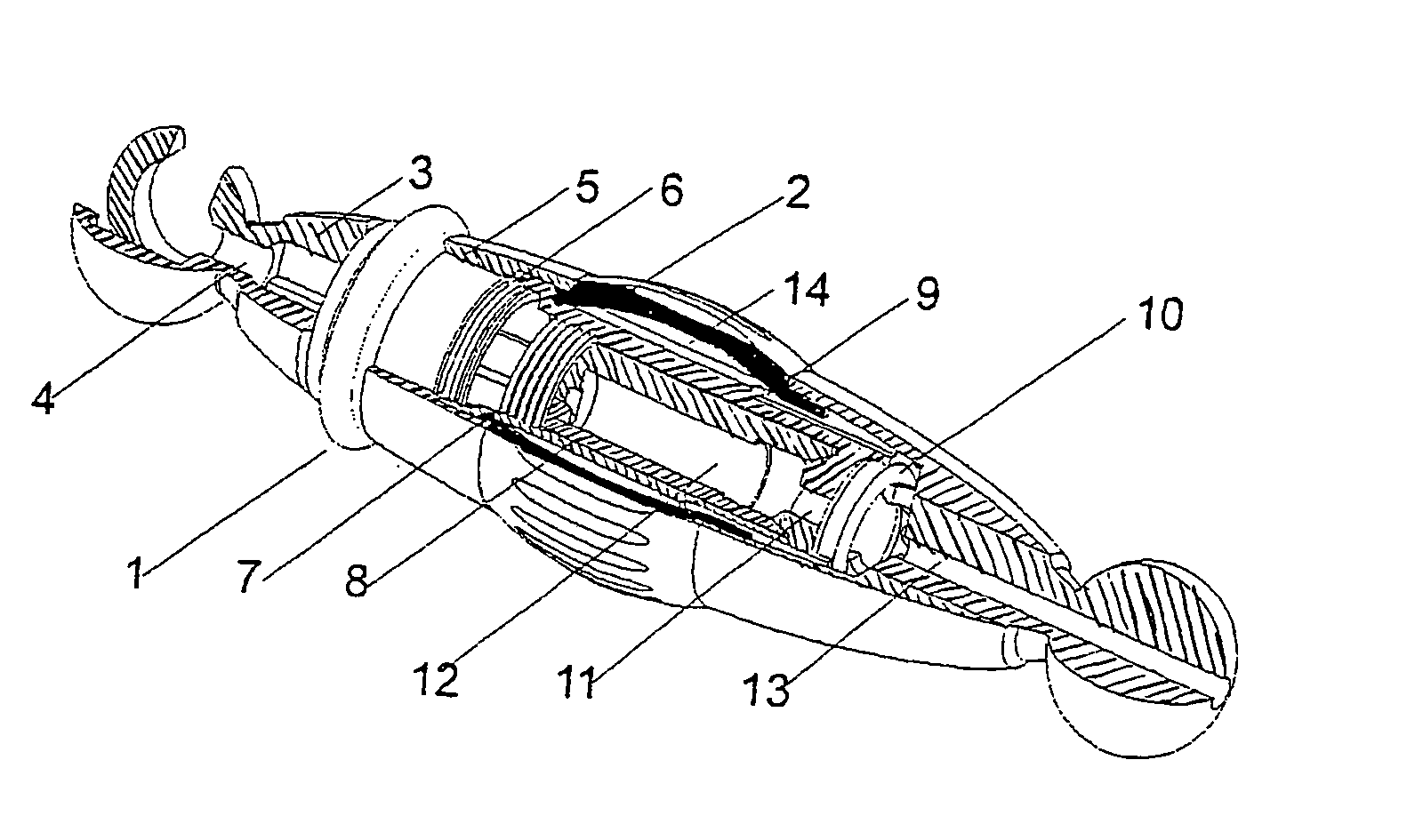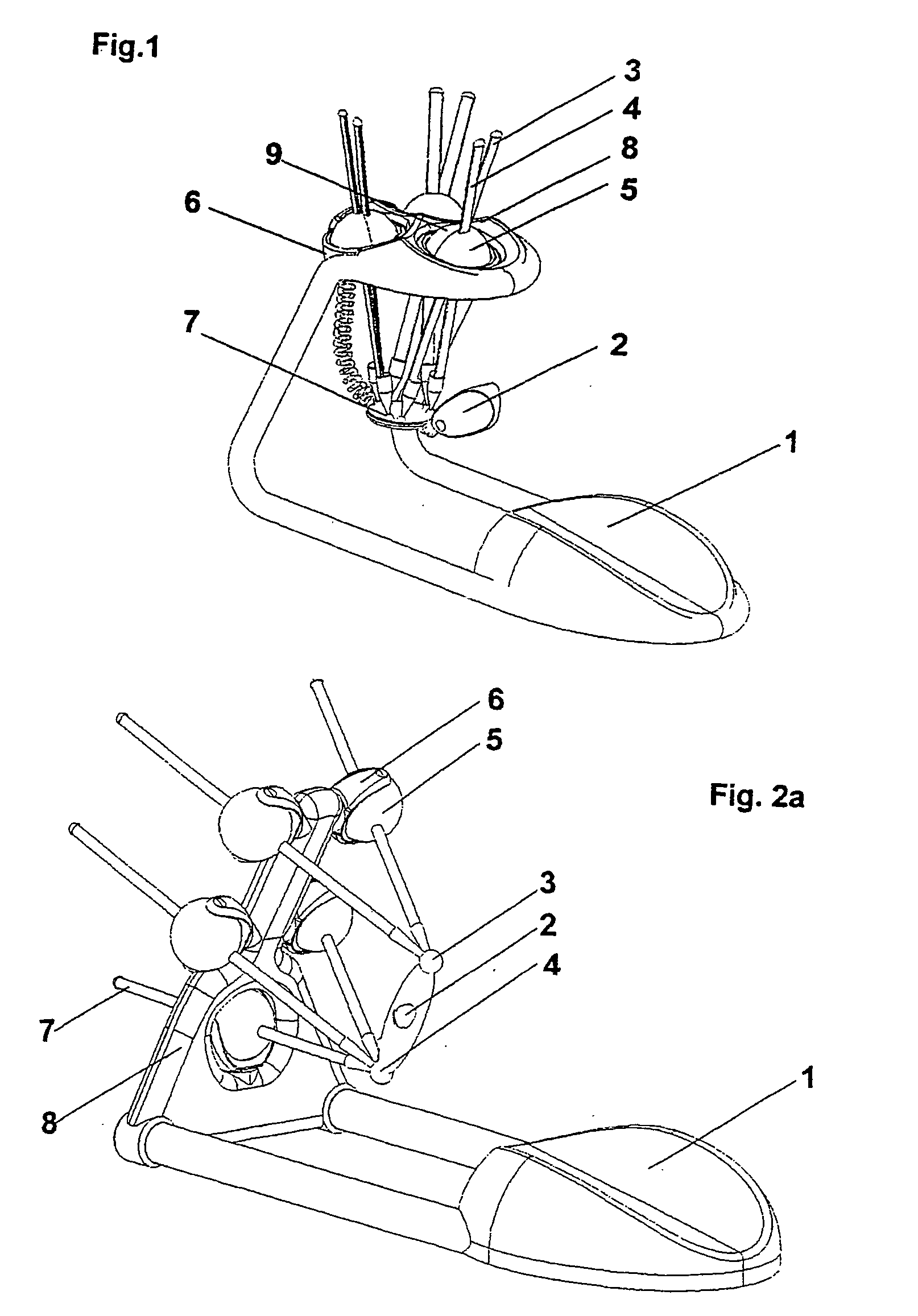Haptic input devices
a technology of input device and input space, which is applied in the direction of mechanical control device, gearing, instruments, etc., can solve the problems of complex system, high cost, and low accuracy of spatial data input, and achieves enhanced fine positional fidelity, small compliance, and increased displacement range
- Summary
- Abstract
- Description
- Claims
- Application Information
AI Technical Summary
Benefits of technology
Problems solved by technology
Method used
Image
Examples
Embodiment Construction
[0152] FIG. 1
[0153] Shows an embodiment of hexapod based haptic device. Movement of the stylus (2) causes the struts to change their lengths between their end linkages (e.g. 7) and their supporting hemispheres (e.g. 5) by passing through the hemispheres and extending out behind. The mix of strut lengths defines the stylus position in 6 axis space.
[0154] 1. Shows an ergonomic arm rest, sloping upwards towards the stylus to elevate and support the wrist.
[0155] 2. Shows an embodiment of a tri-lobal stylus that is attached to the hexapod end frame by a coupling that can be locked off at the users preferred ergonomic angle.
[0156] 3. Shows a representative strut connected universally to the hexapod end frame and passing through a hemisphere (9).
[0157] 4. Shows another representative strut passing through the hemisphere (5) and sharing a pivot axis with hemisphere (9).
[0158] 5. Shows one of the hemispheres that supports the axial displacement of the struts, can measure the effective strut ...
PUM
 Login to View More
Login to View More Abstract
Description
Claims
Application Information
 Login to View More
Login to View More - R&D
- Intellectual Property
- Life Sciences
- Materials
- Tech Scout
- Unparalleled Data Quality
- Higher Quality Content
- 60% Fewer Hallucinations
Browse by: Latest US Patents, China's latest patents, Technical Efficacy Thesaurus, Application Domain, Technology Topic, Popular Technical Reports.
© 2025 PatSnap. All rights reserved.Legal|Privacy policy|Modern Slavery Act Transparency Statement|Sitemap|About US| Contact US: help@patsnap.com



